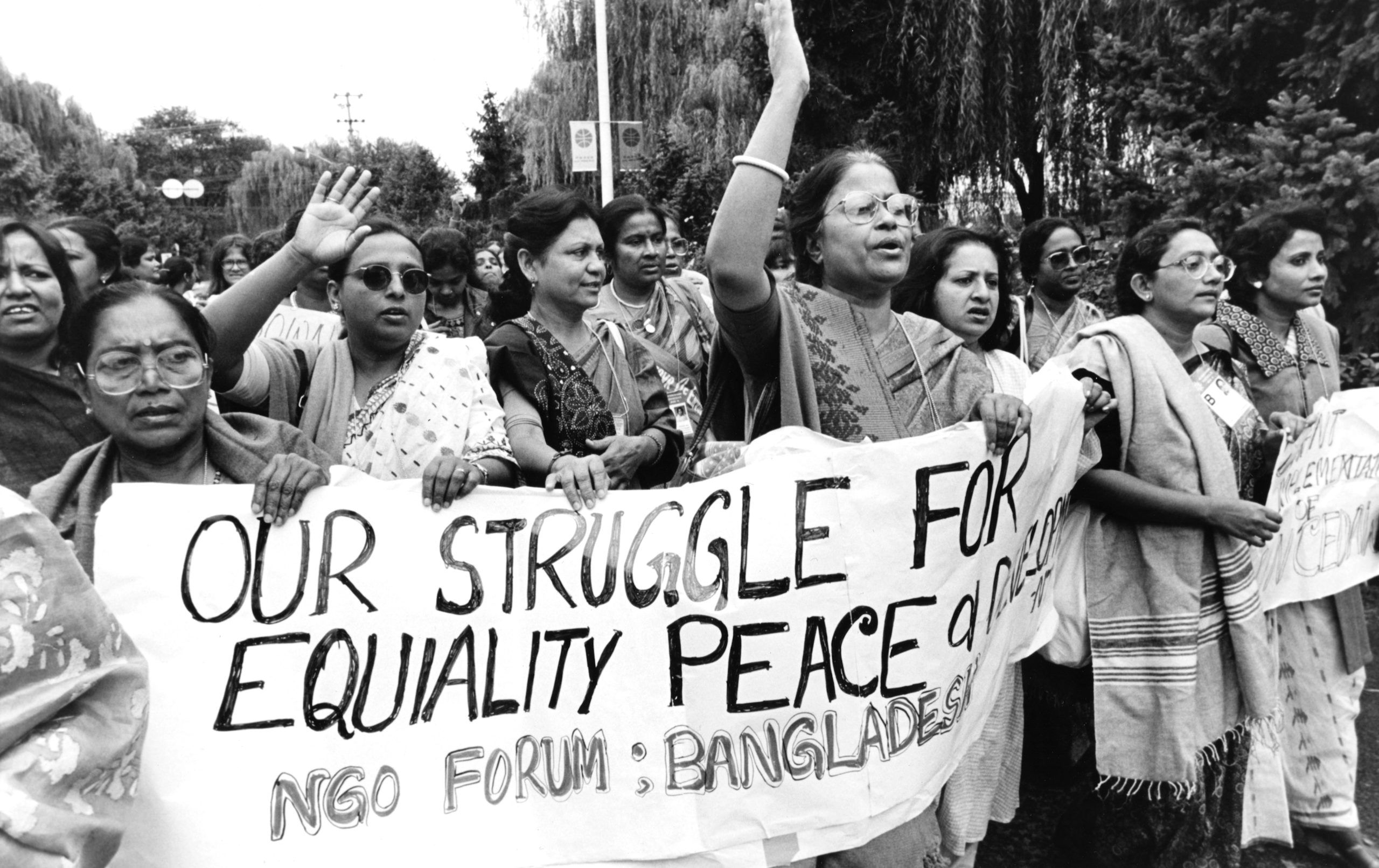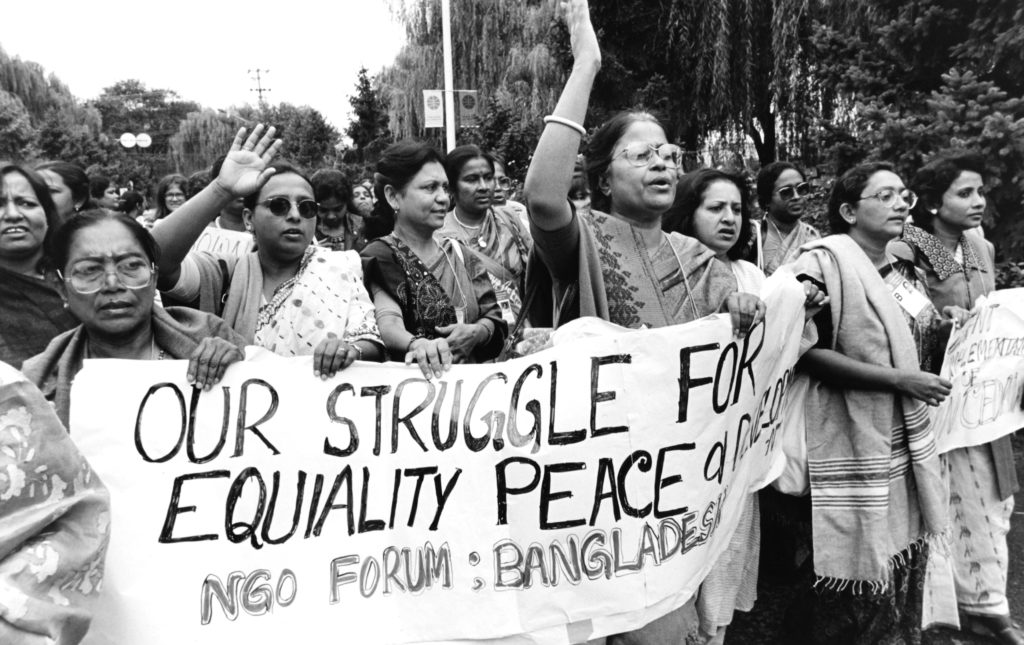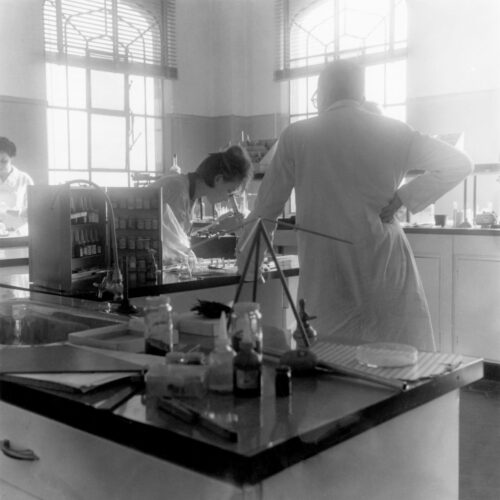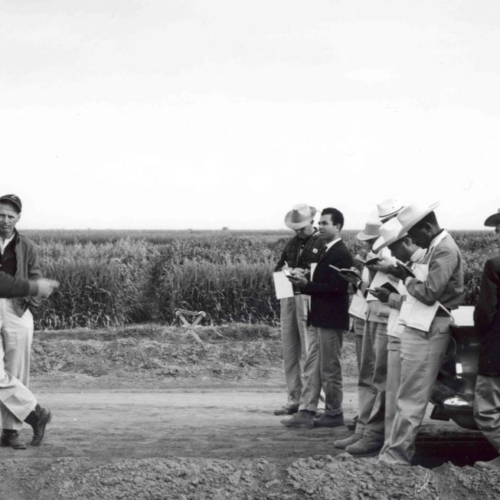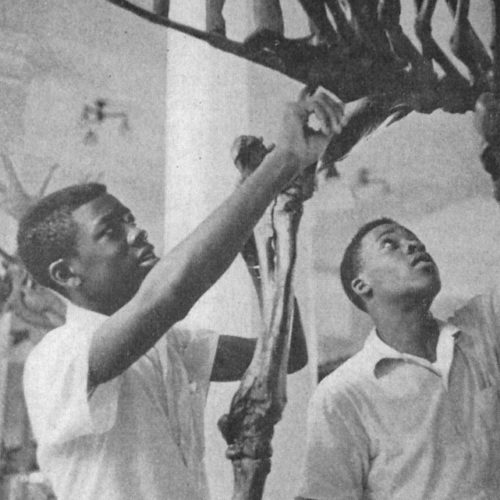A Groundbreaking Gathering
Some fifty thousand diplomats and activists gathered in and around Beijing in August and September 1995 for an historic event. Their aim was to advocate for women’s rights and challenge gender inequality worldwide. This event, the United Nations’ Fourth World Conference on Women, was, up to that time, the largest international gathering ever dedicated to these issues. Although three similar meetings have taken place since 1975, what made the 1995 event extraordinary was an independent parallel gathering, the NGO (non-governmental organization) Forum.
Five million dollars in funding from the Ford Foundation made the NGO Forum possible. Ford saw the Forum as a means to amplify voices from the global south and bring global perspectives to women’s movements.“The Ford Foundation and Beijing: Women’s Program Forum report on Foundation activities in connection with the United Nations Fourth World Conference on Women and NGO Forum on Women,” 1996. Ford Foundation records, Catalogued Reports, Report 015450, Rockefeller Archive Center. While official delegates from 180 countries gathered under the auspices of the UN Committee on the Status of Women, independent groups from around the world also gathered. These groups then mobilized to lobby for their own key issues.
Political Hurdles
The NGO Forum was not as inclusive as American civil society leaders had planned, however. At the time, UN officials deemed some of the focus issues too controversial to bring to Beijing. Hot-button topics included women’s human rights and the rights of LGBTQ+ people. By some estimates, roughly 15,000 people who had hoped to participate may have been excluded. One Ford staffer lamented:
A formidable set of logistical and political difficulties plagued the last-minute planning and execution of the Conference and Forum, with unhappy results for many NGOs.
Ford Foundation Report, 1996“The Ford Foundation and Beijing” p.2, Rockefeller Archive Center.
UN officials denied some groups NGO recognition and some individuals were refused visas. Ultimately, the entire NGO Forum was transferred to Huairou, a small town sixty kilometers north of Beijing. This may have dampened its potential impact on the official meeting.Ruth P. Dawson, “When Women Gather: The NGO Forum of the Fourth World Conference on Women, Beijing 1995.” International Journal of Politics, Culture, and Society, Vol. 10, No. 1 (Fall, 1996), p.9.
Furthermore, some scholars have pointed to the power dynamics that often go hand-in-hand with securing philanthropic funding and have noted that certain groups were never brought into the conversation to begin with.Lisa Levenstein, “US Women in Beijing: The Fourth World Conference on Women and the Global Politics of American Feminism.” Rockefeller Archive Center, Research Reports, 2013.
“U.S. funding had helped to create a top tier of foreign NGOs that had access to resources that many other organizations in their countries lacked.”
Lisa Levenstein, 2013Lisa Levenstein, “US Women in Beijing,” (2013), p.2.
Opening a New Era for Women
To be sure, the NGO Forum was imperfect. But the side-by-side convenings of the official conference and the NGO Forum produced a watershed moment in the global women’s movement. The Beijing Platform for Action brought to the forefront of global awareness the gendered effects of poverty, unequal access to education, violence, political and media representation, and more.
Beyond that, the Beijing convenings also were a turning point in the emergence of a nonprofit sector in several places that lacked that tradition — including China itself. These meetings remain a galvanizing memory for many people working on the ground for grassroots women’s causes today. One assessment concluded that the NGO Forum reflected “the spirit, diversity, and commitment of its multitude of participants.”“The Ford Foundation and Beijing” p.4, Rockefeller Archive Center.
In Beijing in 1995, women and gender finally entered the international agenda.
